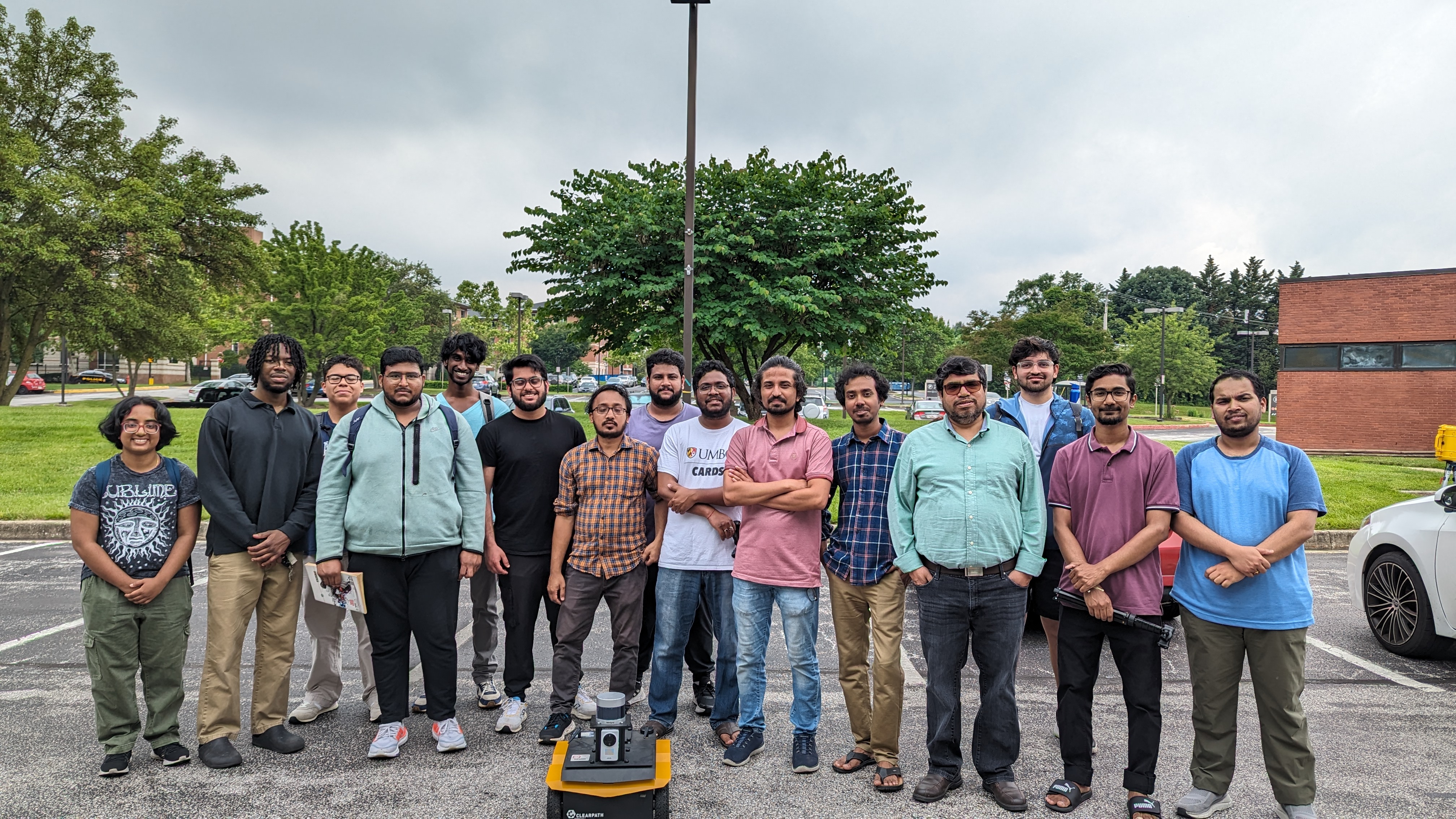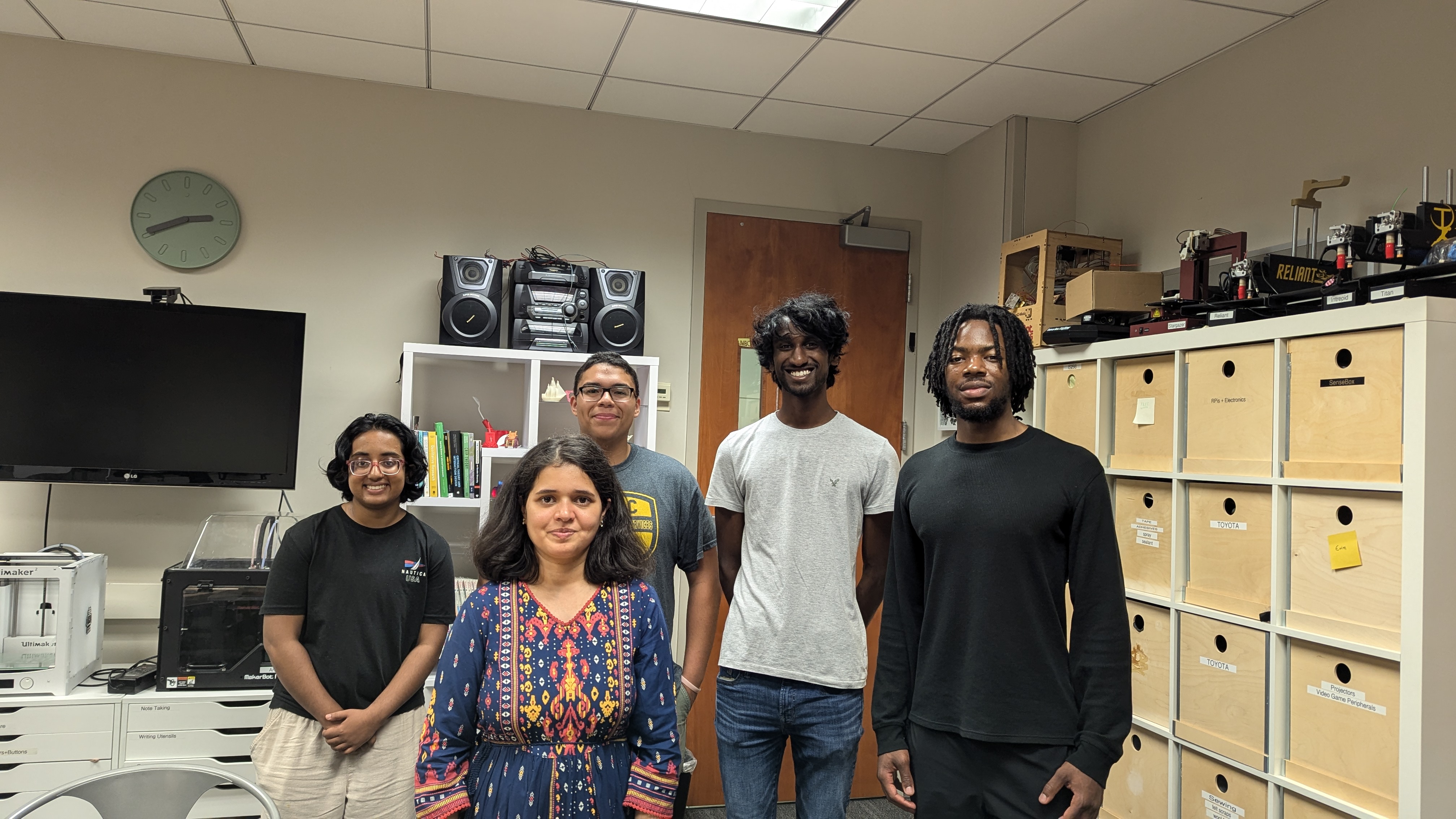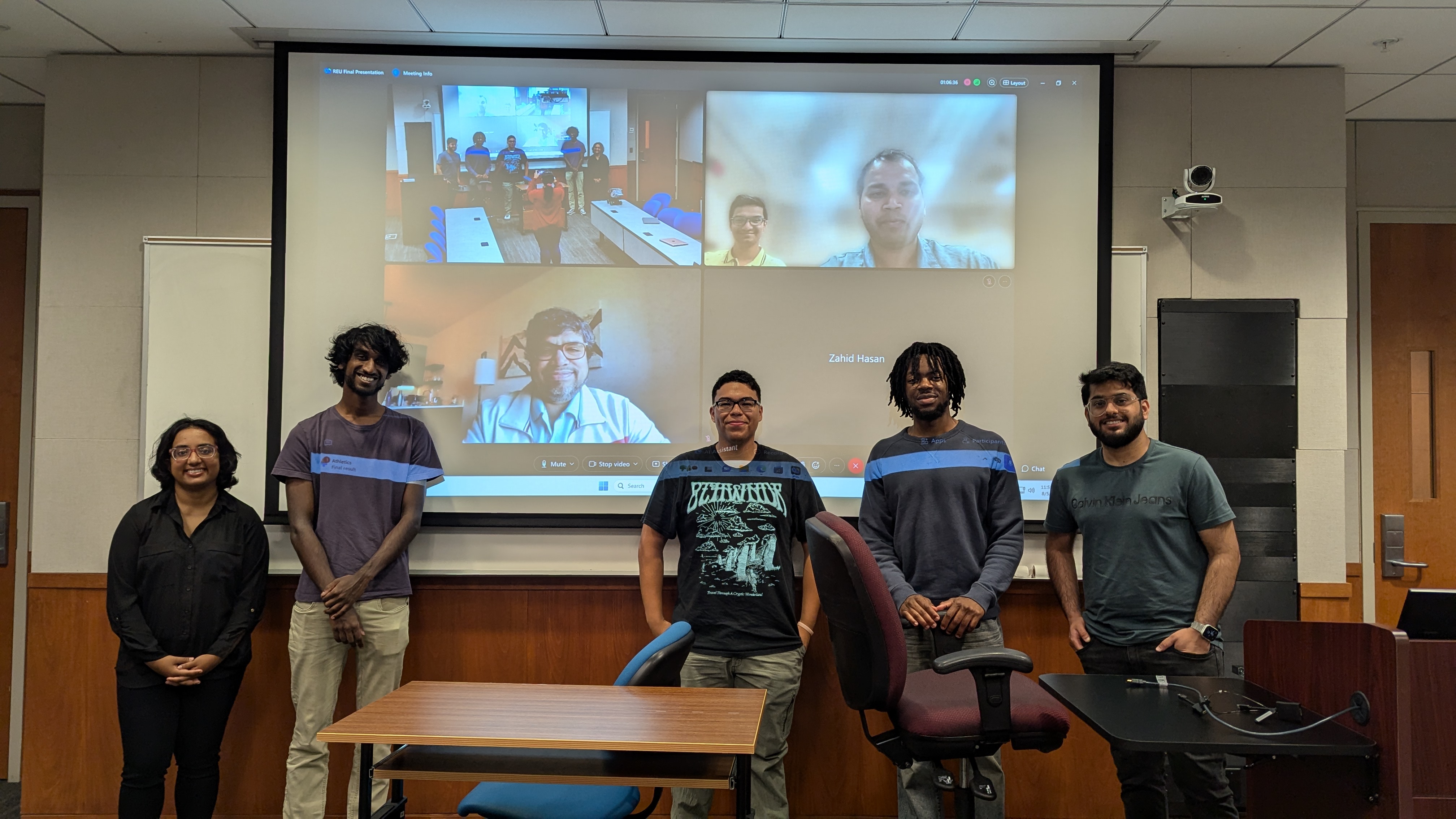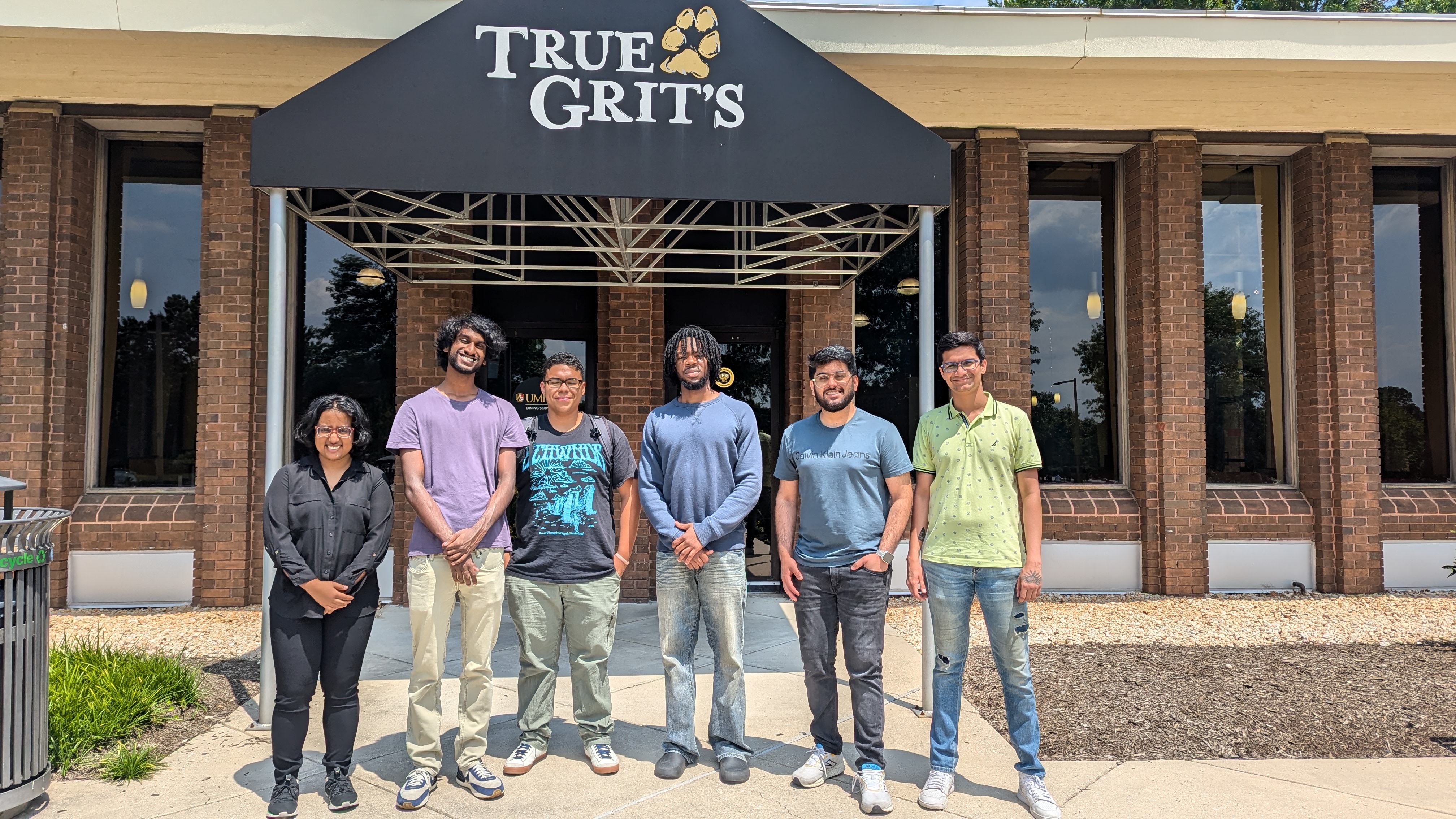NSF-REU Program 2024 at UMBC
Professional Development Activities
Invited Talks from UMBC Leaders
Visit to UMBC Research Lab and Graduate School
Weekly Individual Research Meeting and Training
Utilizing Animal Audiograms for the Development of Safe and Shared Ecosystems
REU student: Anuraag Karunakaran
Mentors: Dr. Bipendra Basnyat, Dr. Anuradha Ravi, Dr. Nirmalya Roy
Abstract—We propose a sustainable and ethical wildlife management, this study explores the development and implementation of selective sound-based animal deterrence systems using ultrasonic audiograms. This innovative approach aims to promote harmonious coexistence between wildlife and human environments, such as gardens and residential areas. The system dynamically adjusts its operation, activating only when necessary to deter animals from specific zones, and remaining inactive to minimize disruption to natural behaviors and habitats. By integrating advanced sound-based technologies, this research proposes a non-invasive, eco-friendly solution that aligns with ethical wildlife practices. The ultimate goal is to create a ubiquitous deterrence system that respects the natural ecosystem while protecting human spaces, fostering a balanced coexistence between humans and wildlife.
Feature Extraction Analysis And Baseline Modeling Of Cognitive Load Using EEG, GSR, And PPG Data
REU student: Cahree Myrick
Mentors: Indrajeet Ghosh, Dr. Nirmalya Roy
Abstract—Working memory is a subset of our short-term memory that facilitates the temporary storage and processing of information. Its uses extend to several cognitive functions, aiding us in daily tasks such as reading, driving, or recalling where you last placed your keys. We collected in-house working memory multimodal sensor data to extract significant cognitive state changes during navigation tasks to cue and improve the recall of those activities intelligently. We propose an evaluation of the working memory dataset with several cognitive load assessment datasets to assess and classify cognitive load levels. Our proposed method comprises a generalized feature extraction module from physiological data such as electroencephalogram (EEG), galvanic skin response (GSR), and photoplethysmography (PPG). We employed five state-of-the-art classification algorithms to predict the induced cognitive load level across two public cognitive load datasets. Furthermore, we analyzed the feature extraction module to determine the most informative features amongst those extracted for each modality.
Development Of A Mounting System For FMCW Radar On UGV And Drones For Detecting Obscured Objects Within The Ground Using mmWave Radar Signals
REU student: Eric Meza
Mentors: Dr. Anuradha Ravi, Dr. Nirmalya Roy
Abstract—In the pursuit of advanced subsurface detection, this study presents the design and implementation of a robust mounting system for Frequency-Modulated Continuous-Wave (FMCW) Radar on Unmanned Ground Vehicles (UGVs) and Drones. The objective is to harness mmWave Radar signals to identify and map obscured objects (partially visible on the surface) within the ground, enhancing situational awareness and operational efficiency in diverse environments. Real-time detection of obscured objects improves the maneuverability of UGVs, assisted by drones that can better capture the surface of the objects. The work details the engineering challenges and solutions in integrating FMCW Radar with UGVs and drones, ensuring stability, accuracy, and optimal signal acquisition during movement. The mount is equipped with an interlocking arm extended from the top of the robot to remove the possibility of obstruction during data collection. The end of the mount consists of a gear system that connects the radar to programmatically driven servos allowing the radar to actuate and collect data from various angles. The point clouds extracted from these angles serve as input to machine learning models, coupled with RGB image data to create Synthetic Aperture Radar (SAR) images of the objects.
Contactless Heart Rate Monitoring: Utilizing Federated Learning For Enhanced Privacy
REU student: Sukriti Roy
Mentors: Emon Dey, Zahid Hasan, Dr. Nirmalya Roy
Abstract—This study presents a new way for contactless heart rate prediction using video data while addressing the critical issue of privacy in healthcare data analysis. We propose a federated learning (FL) framework to process remote photoplethysmography (rPPG) data, enabling heart rate prediction in a contactless manner that does not compromise privacy. Our approach involves collecting video and corresponding rPPG data from multiple sources. Unlike traditional centralized approaches, we set up a decentralized FL model where the initial training occurs on a central server using a portion of the existing data. The partially trained model is then sent to local devices, representing individual data collection sites. These devices continue to train the model using local rPPG data, while only sharing updated model parameters with the central server when they are done. This iterative process continues until the model achieves a specific accuracy in heart rate prediction based on video data. Our approach ensures that sensitive patient data remains on local devices, significantly decreasing privacy issues while utilizing the benefits of distributed data. This research aims to contribute to the growing field of privacy-preserving machine learning in healthcare, offering a safer, more secure solution for contactless vital sign monitoring.



